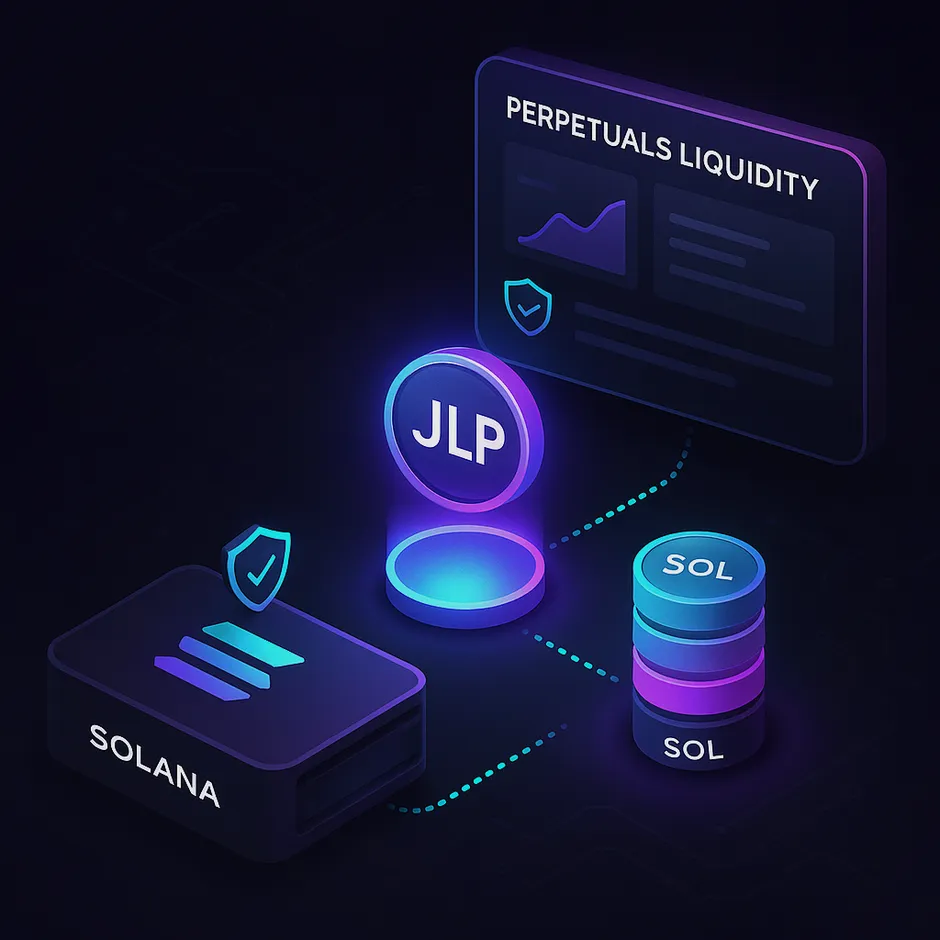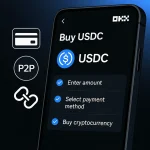If you’ve been watching onchain derivatives on Solana, you’ve probably heard about Jupiter Perpetuals and its liquidity provider token, JLP. This guide walks you through exactly how to buy Jupiter Perpetuals Liquidity Provider Token(JLP) safely, from setting up a wallet and getting SOL/USDC, to minting and managing JLP on the Jupiter Perps interface. You’ll also learn about fees, risks, and best practices so you can move with confidence.
Quick take: JLP is the liquidity provider token for Jupiter Perpetuals on Solana. You don’t “trade” JLP on a CEX; you typically mint/redeem it directly on the protocol using SOL, USDC, or supported assets. LPs earn fees and PnL from traders, but they also bear market risk.
What is JLP on Jupiter Perpetuals?
- JLP represents a share of the liquidity pool that powers Jupiter’s onchain perpetuals. When you hold JLP, you’re the counterparty to traders using the perps exchange.
- Revenue to LPs generally comes from trader fees, funding, and trader PnL (when traders lose). Conversely, LPs can lose when traders win. JLP performance is path-dependent and can be volatile.
- JLP can usually be minted and redeemed directly on the Jupiter Perpetuals app, with the pool holding a basket of assets (commonly USDC and SOL; exact composition may vary over time).
Important distinction: JLP is not JUP (the Jupiter aggregator token). They’re different assets with different purposes.
The safest way to buy JLP on Solana
Because JLP is a protocol LP token, the canonical method is to mint it via the official Jupiter Perps interface. A simple end-to-end flow looks like this:
1) Create a Solana wallet
– Popular options: Phantom, Solflare, or Backpack. Install the browser extension or mobile app and back up your seed phrase securely (offline if possible).
– Add a small amount of SOL for gas (network fees on Solana are low, but you still need SOL).
2) Buy USDC or SOL to fund your wallet
– If you need a fast and low-cost onramp, you can buy USDC or SOL on a reputable exchange, then withdraw to your Solana wallet address.
– New users can register on BTCC and get started quickly. Use invite code NEWER at sign-up: Register on BTCC with code NEWER.
– After purchase, withdraw USDC (SPL) or SOL to your Solana wallet. Always double-check that you’re withdrawing to the Solana network (SPL), not ERC-20 or TRC-20.
3) Navigate to Jupiter Perps and connect your wallet
– Open the official Jupiter Perpetuals app via a verified link (access it from Jupiter’s official site or trusted profiles). Bookmark the URL to avoid phishing.
– Connect your Solana wallet (Phantom/Solflare/Backpack).
4) Mint JLP
– In the Liquidity section, choose “Mint” and select the asset you’ll deposit (often USDC or SOL).
– Review the quoted JLP amount, fees, pool share, and current pool composition.
– Approve the transaction in your wallet. You’ll receive JLP in your wallet once confirmed.
5) Track and manage your JLP
– Your wallet will display the JLP balance; you can also view it in the Jupiter app’s Portfolio/Liquidity section.
– To exit, use “Redeem” on the same interface to convert JLP back into supported assets.
Why fund via a CEX before minting JLP?
Onchain perps LP tokens like JLP generally require assets already on Solana. If you’re starting with fiat, a CEX makes the onramp straightforward:
- Speed and liquidity: Buy SOL or USDC quickly and in size.
- Simplicity: Single KYC and payment methods to get started.
- Clear fees: Easy to estimate costs before moving onchain.
Pro tip: If you need a quick onramp, create an account at BTCC (Invite Code: NEWER). Buy USDC or SOL, withdraw to your Phantom/Solflare wallet on Solana, and mint JLP directly on the Jupiter Perps app.
Detailed walkthrough: from zero to JLP
-
Step 1: Wallet security basics
- Write your seed phrase on paper, store offline, and consider a hardware wallet for larger balances.
- Enable approvals and transaction simulations in Phantom/Solflare when available.
-
Step 2: Acquire SOL and USDC
- You need SOL for fees and often USDC to mint JLP.
- Use BTCC sign-up (NEWER) to buy SOL/USDC. Withdraw SPL USDC to your Solana address (starts with 3–5 letters like “F” or “5,” not “0x”).
-
Step 3: Verify the official app
- Use a trusted source to open the Jupiter Perps app. Be wary of sponsored links and lookalike domains.
- In your wallet, verify domain and permissions before connecting.
-
Step 4: Mint JLP carefully
- Choose your deposit asset and amount; confirm the JLP quote, slippage, and fees.
- Keep some spare SOL for additional transactions.
-
Step 5: Monitor performance
- Track pool composition (e.g., USDC/SOL ratios), realized/unrealized PnL, and trading activity.
- Understand that when traders win broadly, LPs can experience drawdowns; when traders lose, LPs can earn.
-
Step 6: Redeem when needed
- Use the “Redeem” function to exit. Check for any redemption fees or cooldowns. Confirm receiving assets in your wallet.
Fees, yields, and what actually drives JLP returns
- Trading fees: A portion of trader fees accrues to the pool, benefiting JLP holders.
- Funding payments: Perpetuals funding between longs and shorts can impact pool returns.
- Trader PnL: LPs are the counterparty to traders. Net trader losses are LP gains, and vice versa.
- Price exposure: If the pool holds SOL, you inherit some SOL price exposure through the pool composition.
- Mint/redeem costs: There may be minimal protocol fees plus Solana network fees.
Because these variables fluctuate, JLP’s APY is not fixed and will vary with market regimes.
Risk checklist before you buy Jupiter Perpetuals Liquidity Provider Token(JLP)
- Market risk: You’re exposed to trader PnL. If the trader cohort is consistently profitable, JLP can underperform.
- Asset mix risk: Pool holdings (e.g., SOL’s volatility) can impact JLP value.
- Protocol risk: Smart contract vulnerabilities or oracle issues can affect outcomes.
- Liquidity risk: Large mints/redemptions can move pool composition and pricing.
- Operational risk: Phishing and wallet mismanagement are common pitfalls. Use hardware wallets and verify URLs.
This is not financial advice. Only allocate what you can afford to risk, and consider position sizing, diversification, and progressive scaling.
Common questions about buying JLP
-
Can I buy JLP on a centralized exchange?
- Typically no. JLP is minted/redeemed on the Jupiter Perpetuals app. Secondary liquidity, if any, is usually limited and not the primary route.
-
Do I need SOL if I only deposit USDC?
- Yes. Even if you mint using USDC, you still need a small amount of SOL to pay Solana transaction fees.
-
How do I know my JLP is real?
- Always mint from the official Jupiter Perps interface. If you see a “JLP” elsewhere, verify carefully on a reputable explorer like Solscan. When in doubt, stick to the official minting portal.
-
Is JLP the same as yield farming?
- It’s different. You’re not just lending; you’re providing liquidity to a perps engine and taking the other side of trader flow. Returns are path-dependent and can be volatile.
-
What’s the minimum to mint JLP?
- Minimums can be small due to low Solana fees, but check the interface for any thresholds.
Best practices for smooth minting and management
- Use a dedicated wallet for DeFi interactions, separate from long-term cold storage.
- Keep 0.02–0.1 SOL for multiple transactions, depending on your activity.
- Double-check network when withdrawing USDC from a CEX—ensure it’s SPL on Solana.
- Bookmark the official app and decline any unexpected signature requests.
- Periodically review the pool’s composition and your JLP share.
A practical onramp-to-JLP flow you can copy
- Sign up at BTCC with code NEWER
- Complete KYC, buy USDC (or SOL)
- Withdraw USDC (SPL) to your Phantom or Solflare wallet on Solana
- Go to Jupiter Perps app, connect wallet
- Mint JLP using your USDC or SOL
- Monitor performance and adjust as needed
This route is popular because it combines the convenience and liquidity of a CEX with the permissionless power of onchain perps liquidity provisioning.
Troubleshooting tips
-
Transaction failing or stuck?
- Increase your SOL balance slightly and retry. Confirm RPC health or switch your wallet’s RPC endpoint if supported.
-
Wrong network for USDC withdrawal?
- If you accidentally withdrew USDC on a non-Solana network, contact your CEX support. In many cases, funds on the wrong chain cannot be recovered to a Solana wallet.
-
Phishing scare?
- Revoke suspicious approvals using your wallet’s permissions manager and move funds to a fresh address.
-
Large slippage warnings?
- Consider splitting your mint/redemption into smaller chunks or waiting for better conditions.
Key takeaways for buyers
- The most reliable method for how to buy Jupiter Perpetuals Liquidity Provider Token(JLP) is to mint it on the official Jupiter Perps interface using SOL or USDC.
- For a smooth onramp, purchase SOL/USDC on a reputable CEX and withdraw to your Solana wallet. You can start here: Register on BTCC (Invite Code: NEWER).
- Understand JLP’s risk/return drivers: trading fees, funding, trader PnL, and pool composition.
- Practice strict wallet hygiene and always verify app URLs and token addresses before approving transactions.
Resources and links
- Wallets: Phantom, Solflare, Backpack
- Explorer: Solscan
- Onramp: BTCC — Invite Code NEWER
- Security: Enable transaction simulation, hardware wallet support, and domain verification in your wallet





